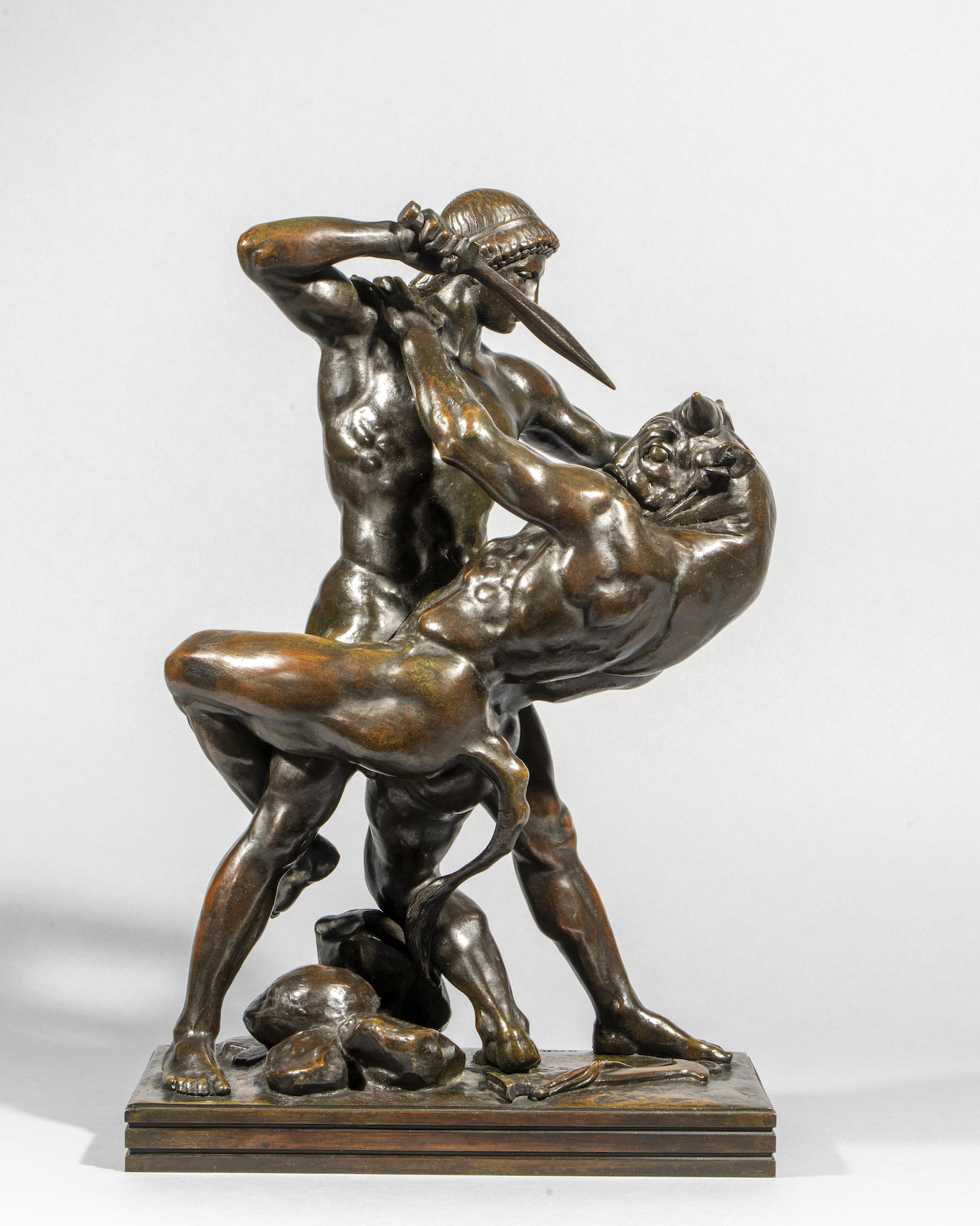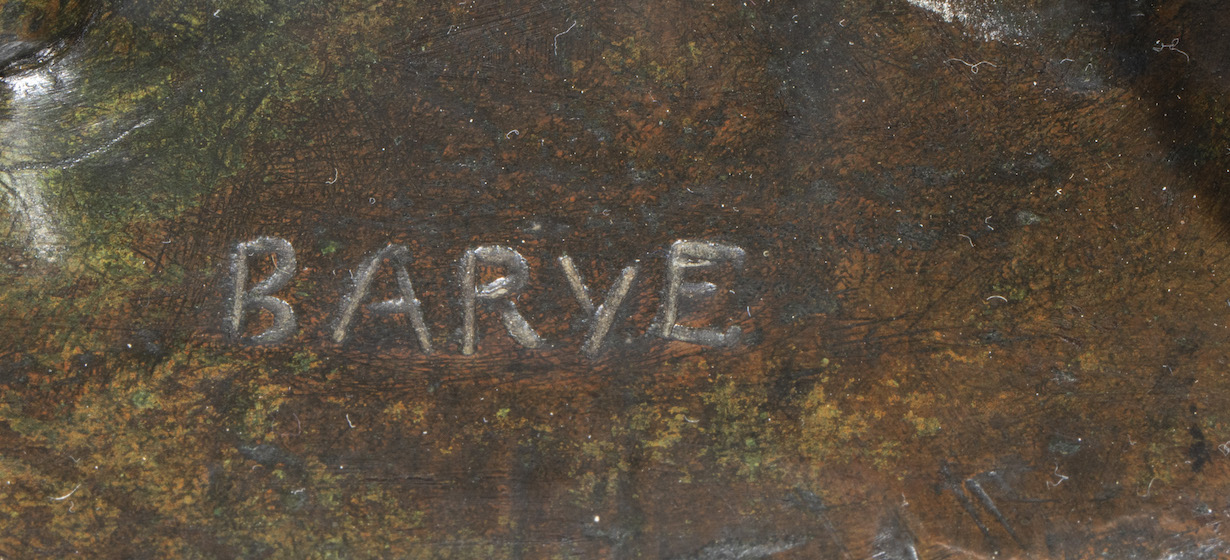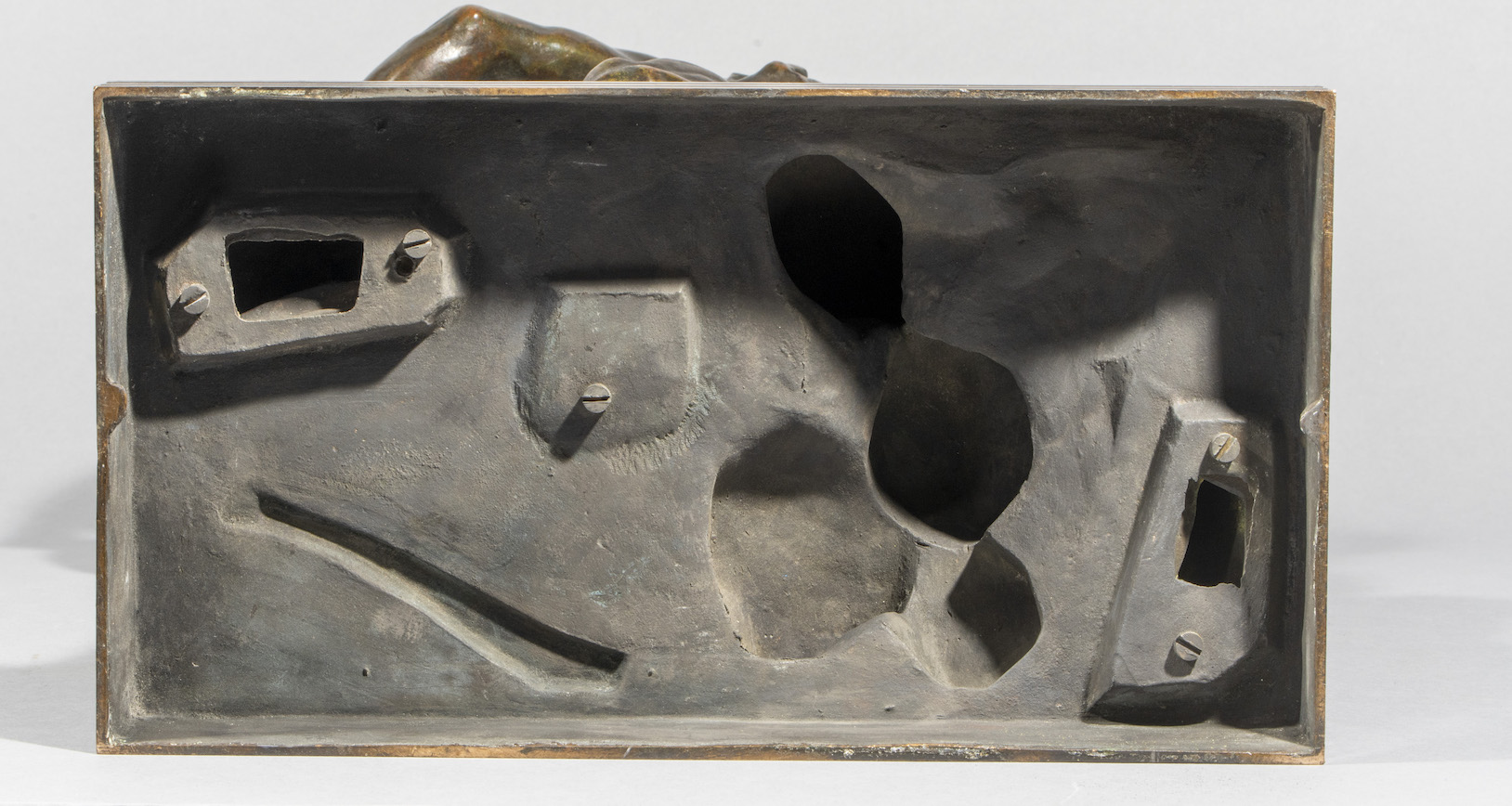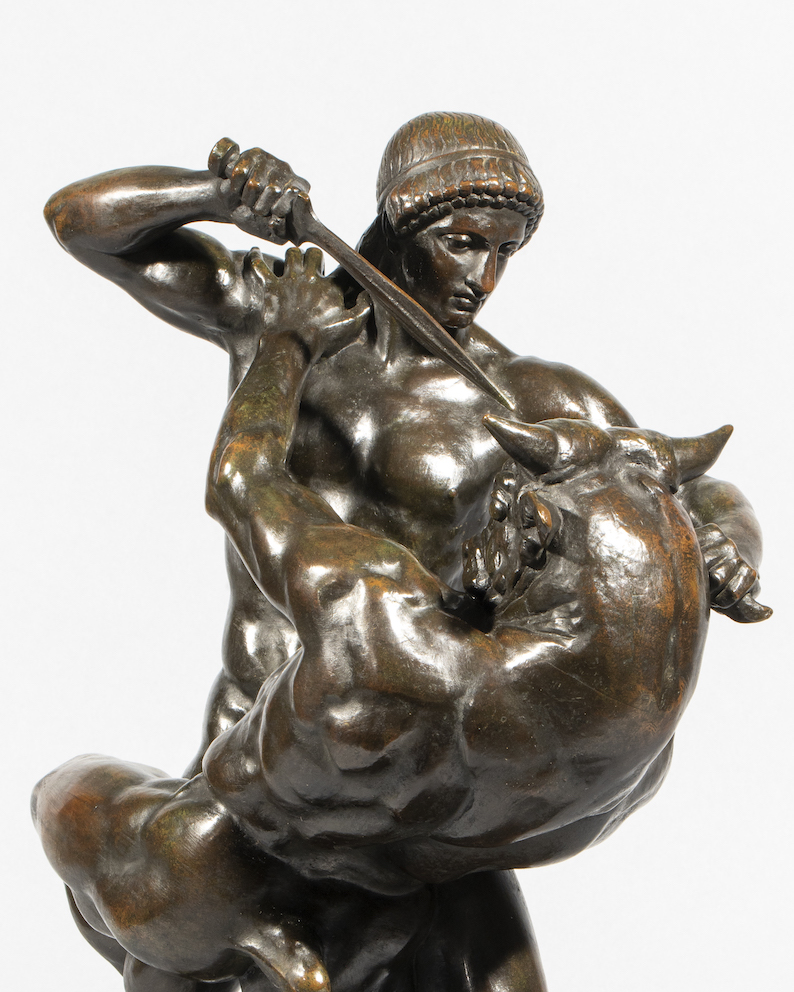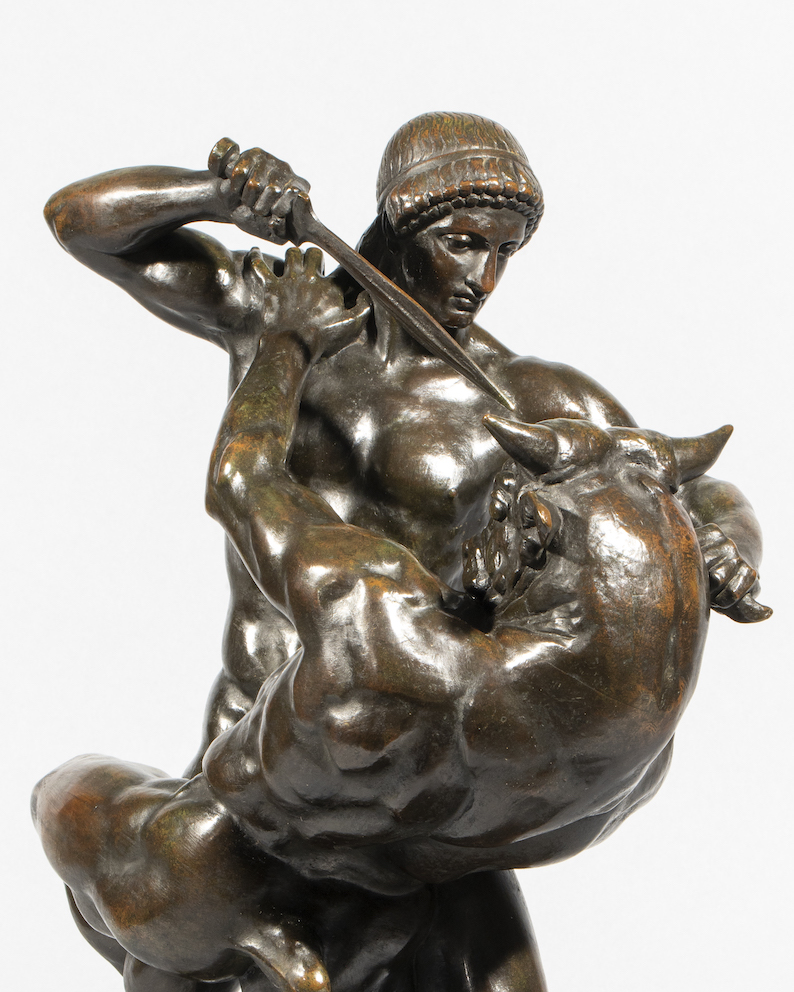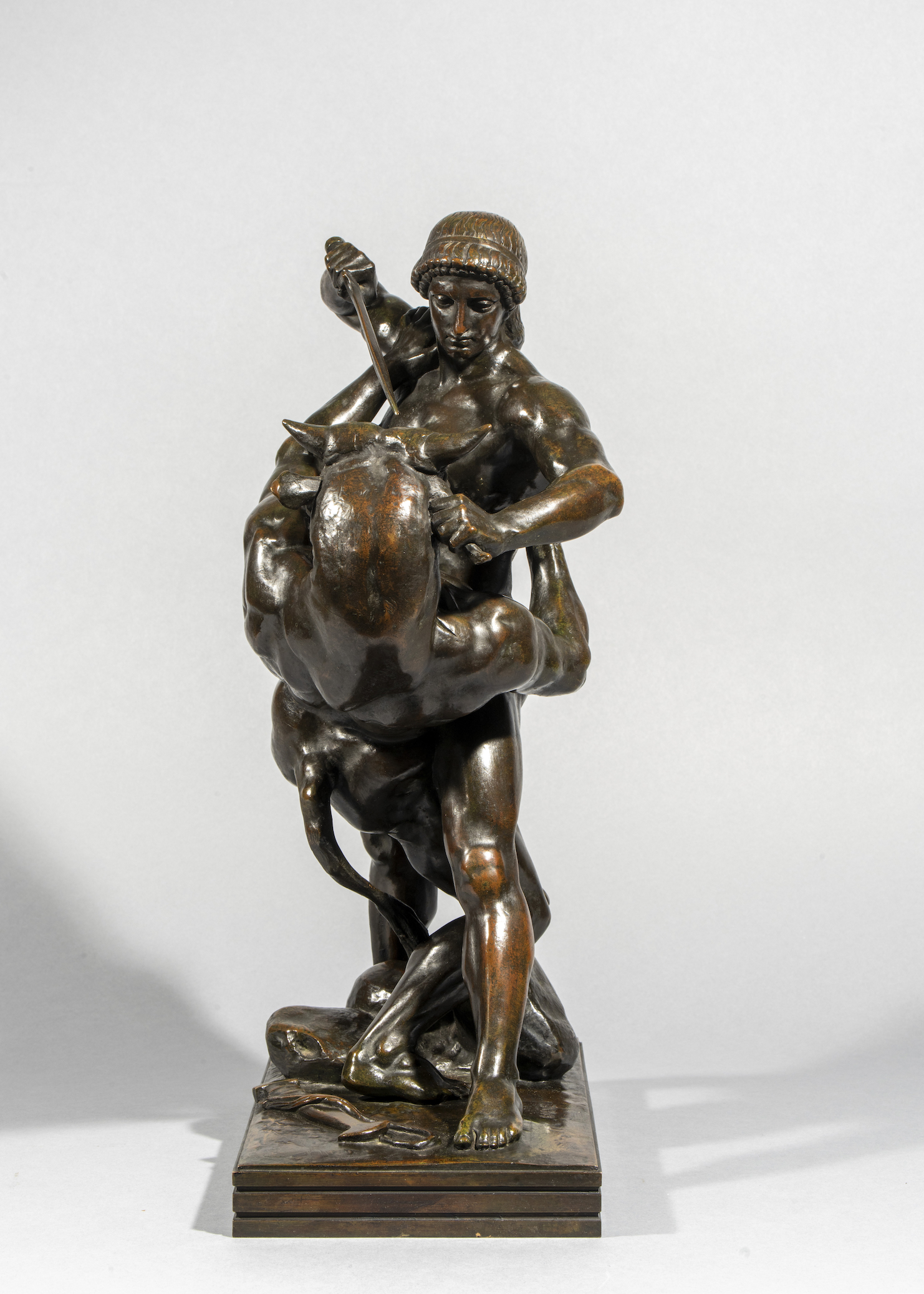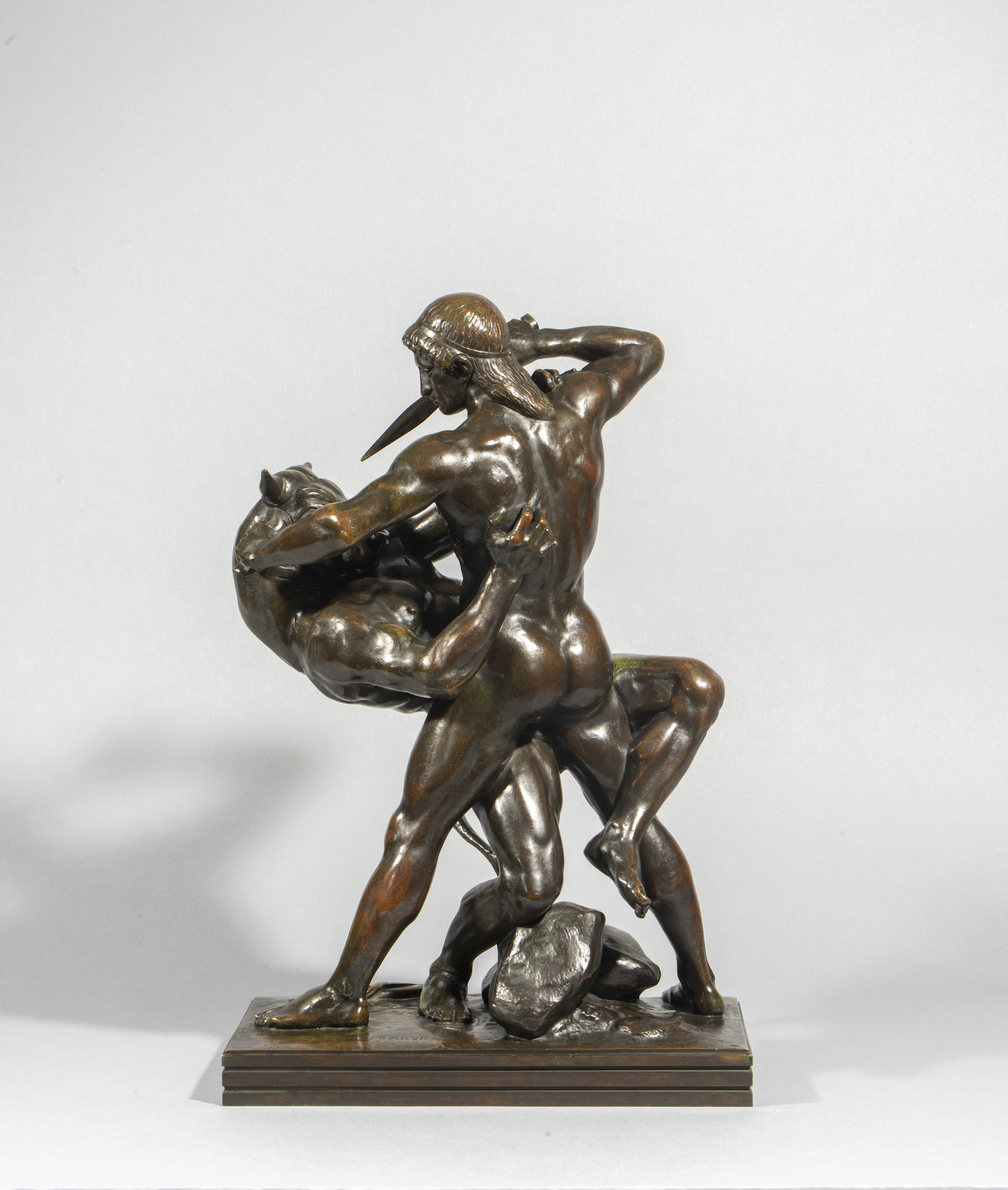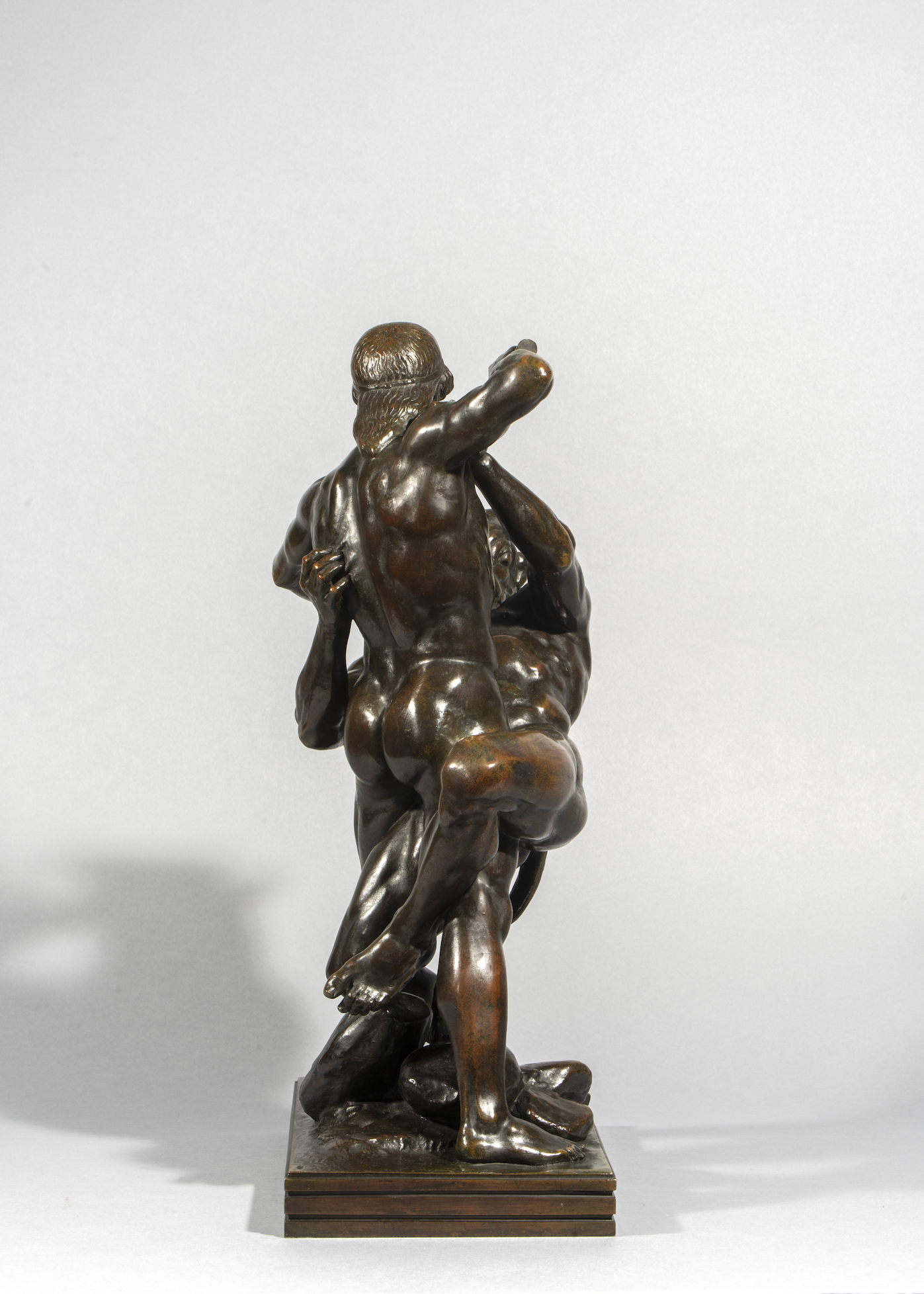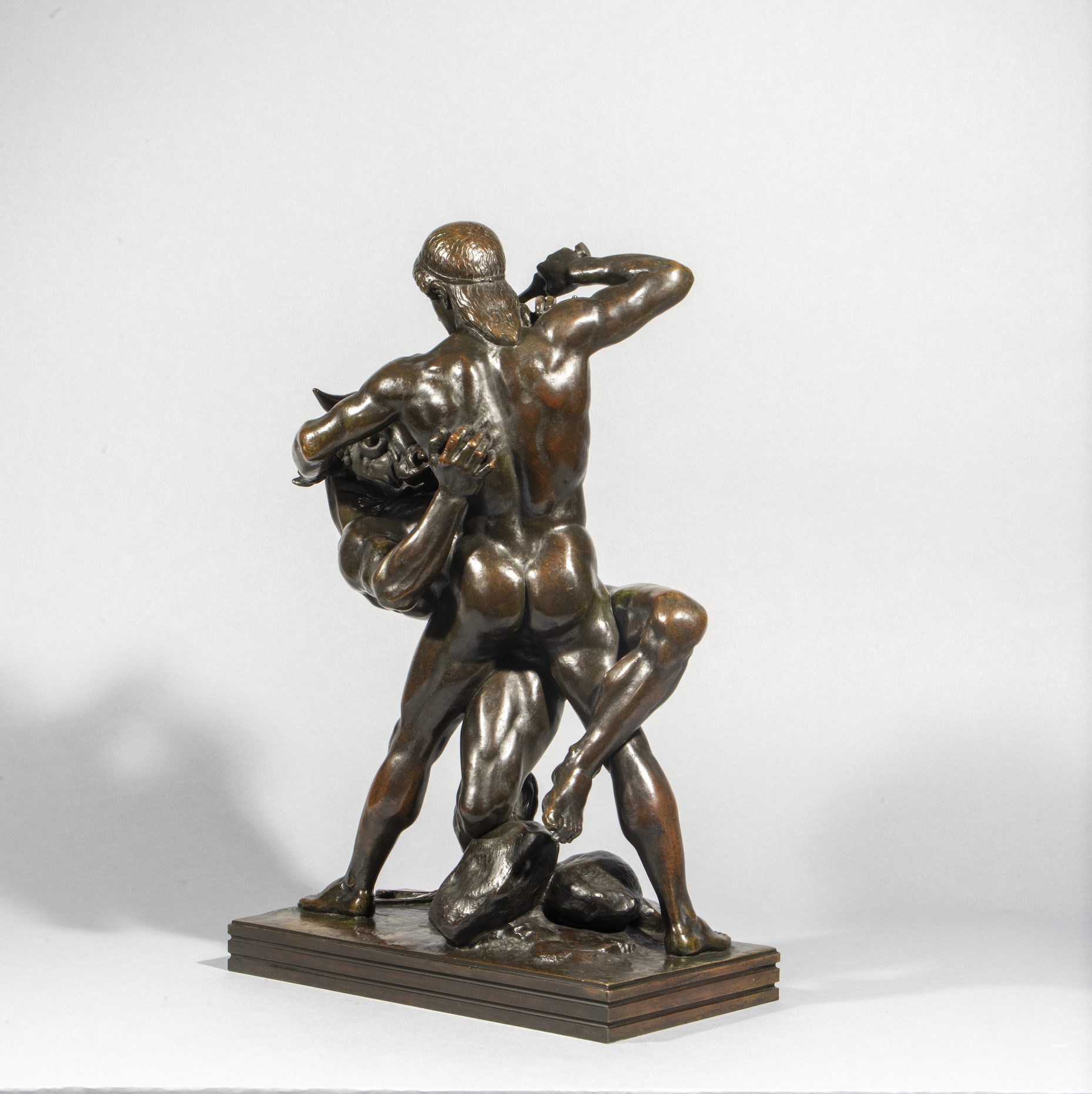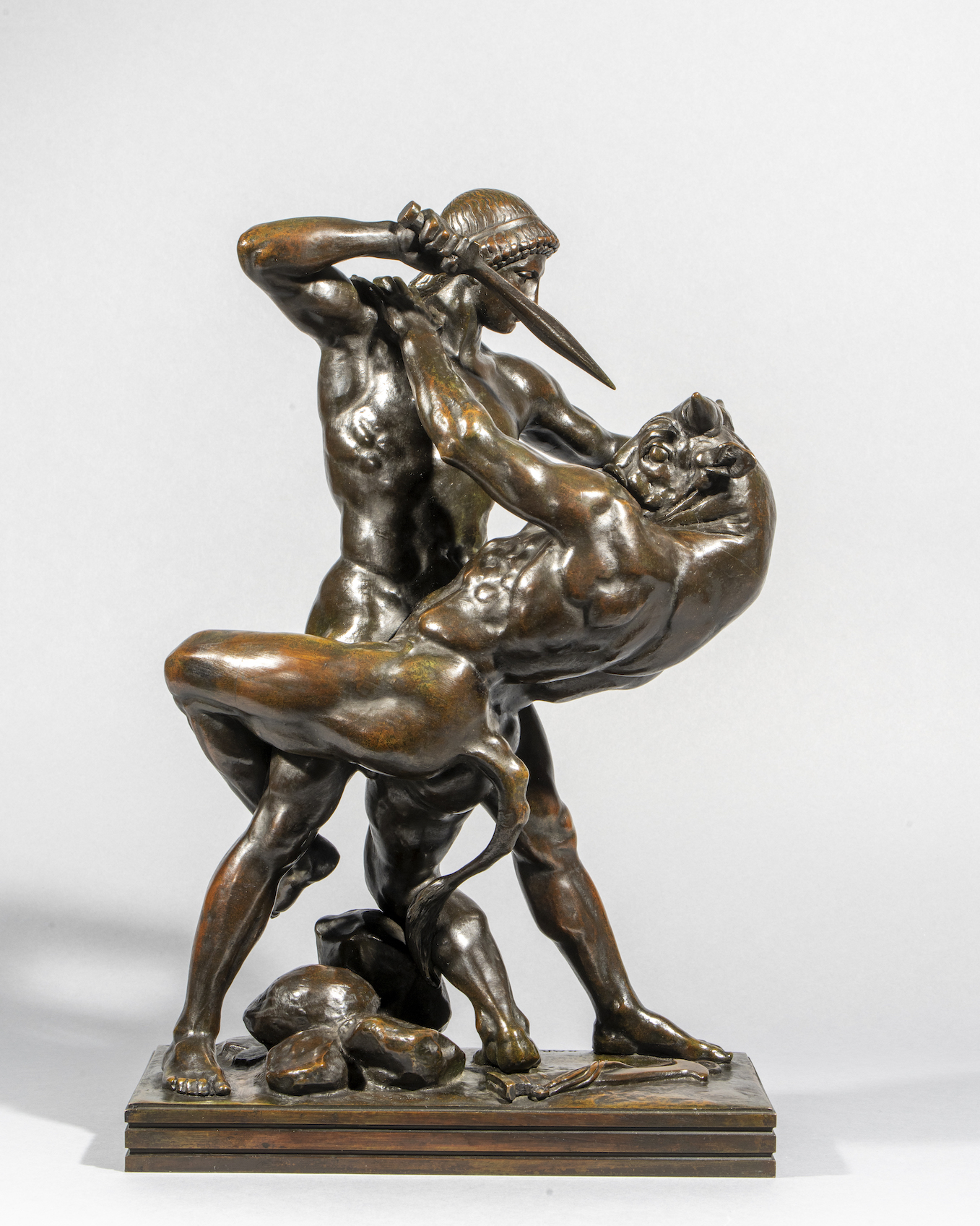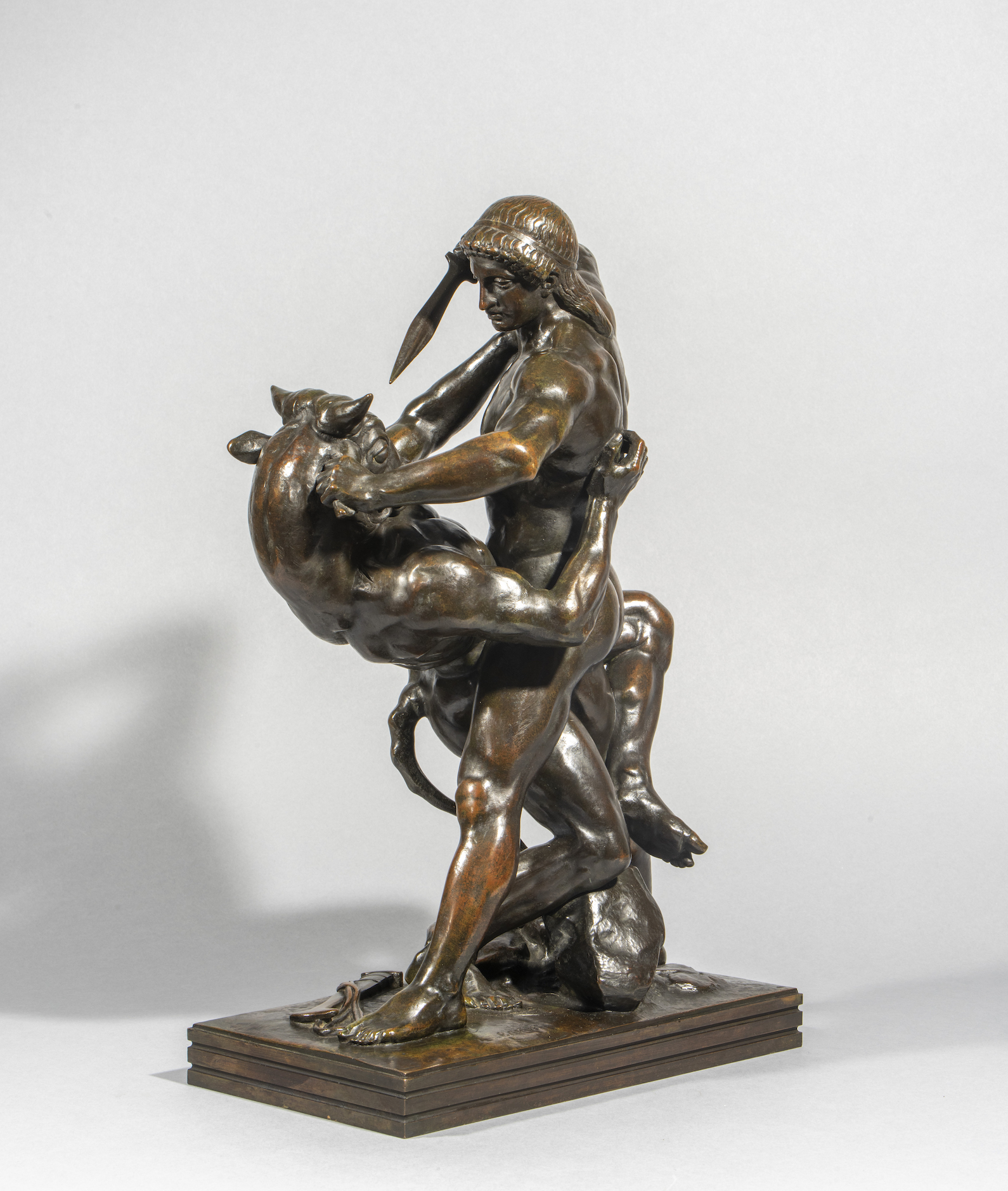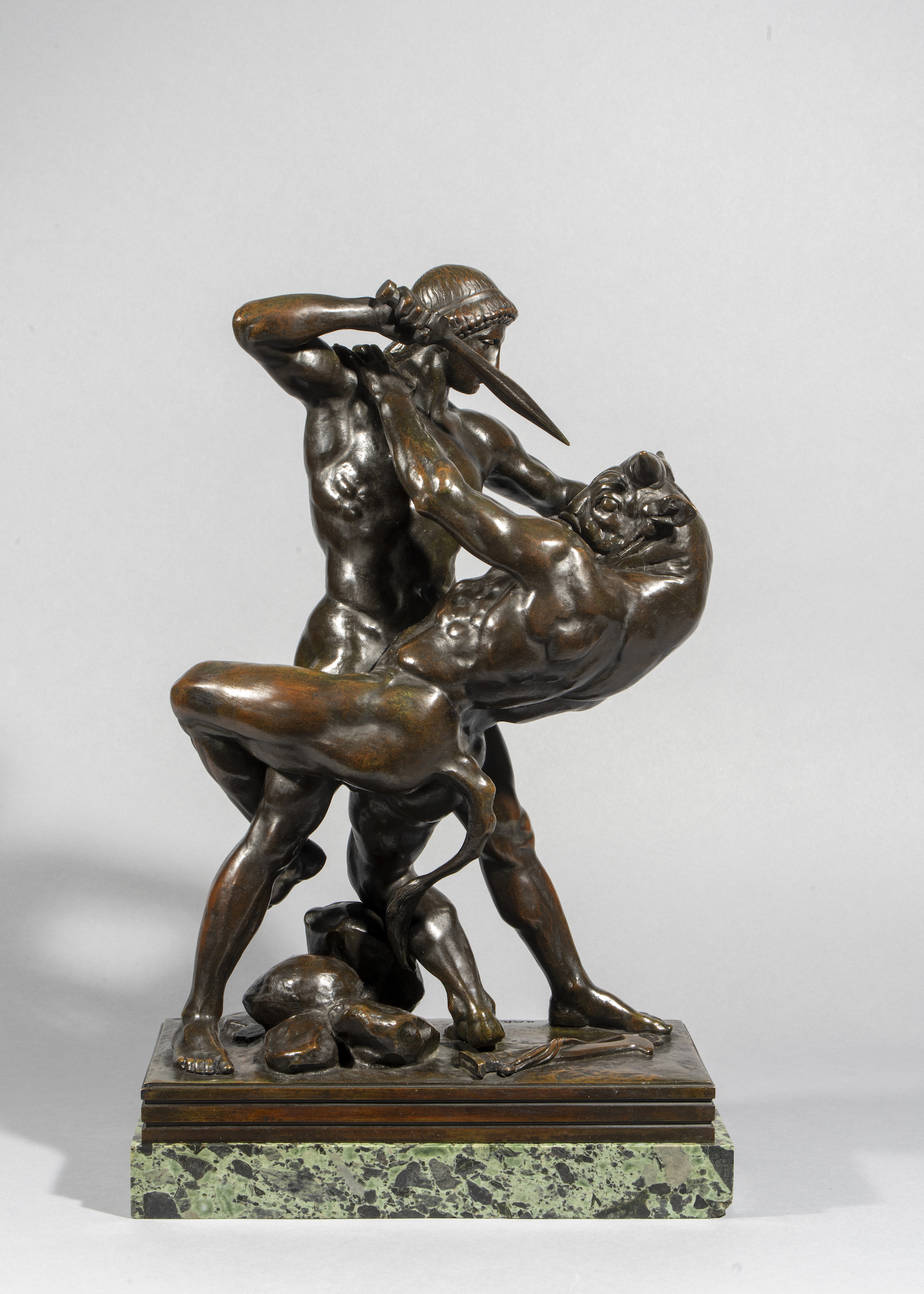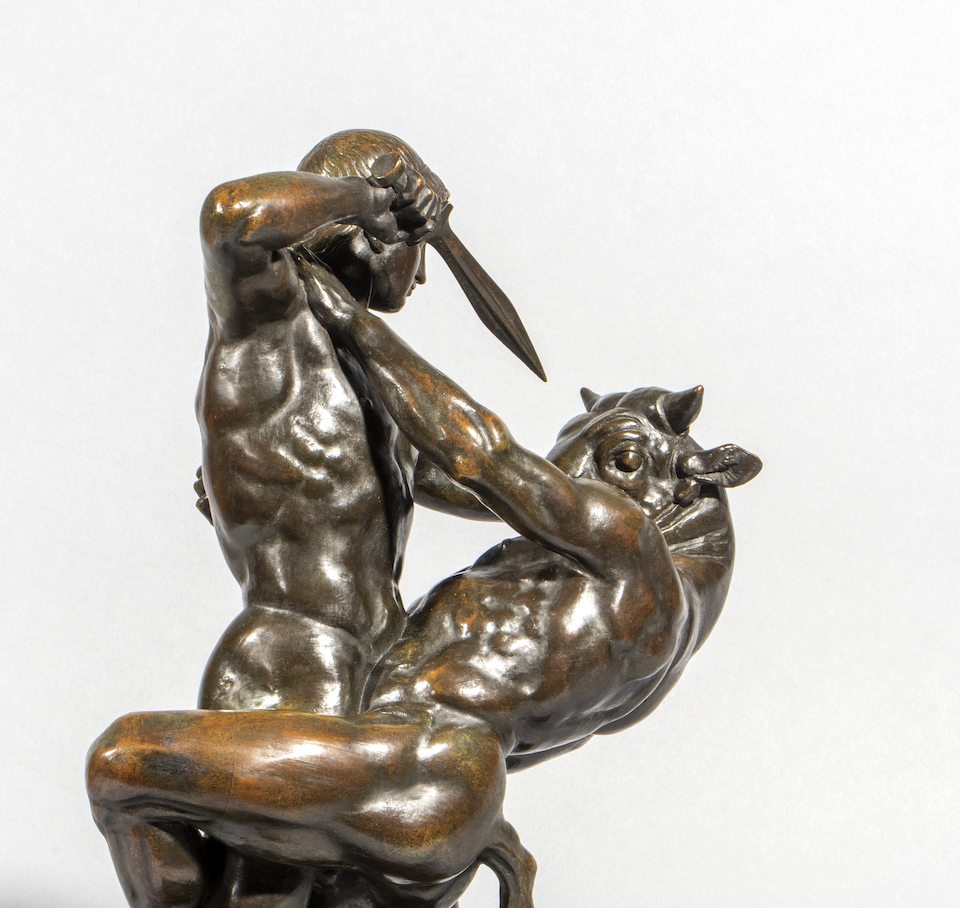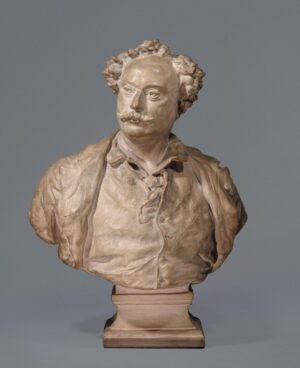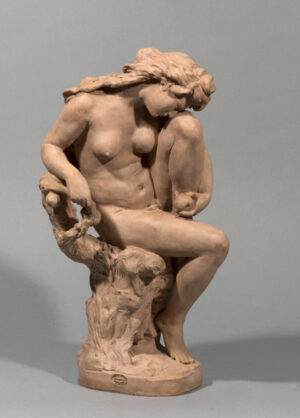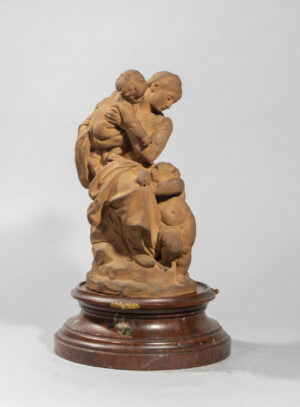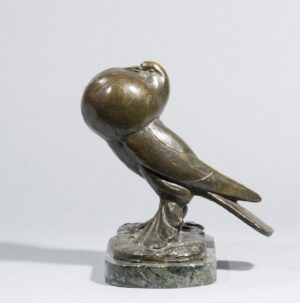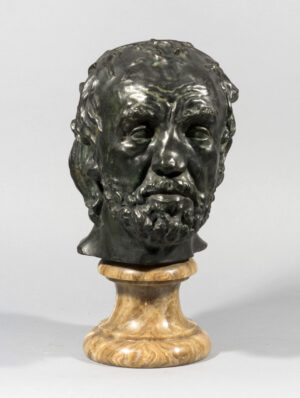Description
«Certainly, this is one of the most beautiful, one of the most energetic figures produced by modern sculpture; mastering his enemy and ready to tame him, the Greek hero has all the nobility, strength and pride of the fabled character. » (Besse, 1844). It was in these laudatory terms that Besse et Cie, the most important dealer in Barye’s bronzes, presented Theseus Slaying the Minotaur at the very beginning of their catalogue, a confirmation of the development of the sculptor’s editions of works rejected at the Salon (the bronze was in fact rejected at the Salon of 1843). The first of the four casts to be sold listed in Martin’s accounts was the one presented at the 1855 Exposition Universelle, purchased for 230 F and now in the Victoria and Albert Museum, London. Before 1857, no more than fifteen casts were produced. In this second version, Barye modified the base and its profile. The number of lifetime casts of the second version is greater than the total casts of the first version.
In portraying Theseus’ fight against the Minotaur, Barye understood the advantage of depicting both figures standing upright. This arrangement allows the Minotaur’s body to be more fully developed, and establishes a more striking contrast between the limbs of the taurine monster and those of the hero, shown to magnificent advantage. The torso and limbs express both strength and energy; the head, imbued with a virile ardor, is in perfect harmony with the character of the body, very much inspired by the Theseus of the Parthenon, which could not have been unknown to Barye. The sculptor’s tour de force was to infuse this ancient grandeur into a group of modest proportions. The spectator, contemplating the combat, instantly understands that the Minotaur will be defeated, as he guesses that Theseus is measuring his blows rather than repeating them, and that the monster will soon be rolling at his feet, dazed and bloodied. This grandeur of gesture is all the more striking in our bronze as its exceptional atelier Barye casting quality and rich patina here and there subtly underline its muscular construction.

